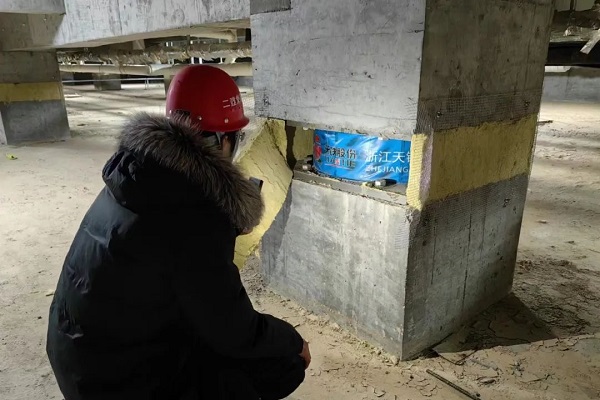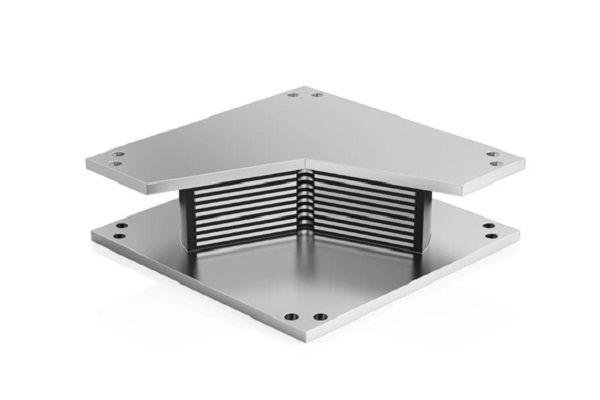Definition of Viscoelastic Dampers
A viscoelastic damper is a damper that uses viscoelastic material to absorb vibrational energy. Its construction is varied, usually achieving reliable bonding with steel plates and high-damping rubber, resembling a "sandwich." The steel plates fixed to the structure drive the rubber to undergo shear deformation, consuming vibrational energy. It is a composite damper that combines both displacement and velocity types, and is also a highly efficient vibration reduction device.
Common Forms of Viscoelastic Dampers
Viscoelastic damper products are divided into two types: plate-type viscoelastic dampers and cylinder-type viscoelastic dampers. The plate-type viscoelastic damper is composed of viscoelastic material and constraint plates, both of which are plate-shaped. The cylinder-type viscoelastic damper consists of viscoelastic material and inner and outer constraint cylinders, with the viscoelastic material layer being cylindrical.
Working Principle of Viscoelastic Dampers
Viscoelastic dampers mainly rely on the hysteresis energy dissipation characteristics of viscoelastic materials to increase the damping of the structure. They can be used for both earthquake and wind-induced vibration control of structures. Viscoelastic dampers combine the advantages of both displacement and velocity-type dampers, providing a certain level of stiffness and damping to the main structure, thus achieving better vibration reduction effects than traditional dampers. Additionally, viscoelastic dampers in building can significantly reduce the seismic response of structures; the story displacement, story acceleration, inter-story displacement, and inter-story shear force are all noticeably decreased.
Advantages of Viscoelastic Dampers
Viscoelastic dampers can start dissipating energy under micro-vibration, generating different energy dissipation effects at different frequencies. This shock absorbers for buildings can provide some stiffness to the upper structure while also offering a certain damping ratio to the entire structure.
Once reliably connected to the building structure, they can effectively dissipate energy from small-amplitude vibrations caused by wind. During earthquakes, they can meet the energy dissipation requirements under large deformations while also contributing to some stiffness.
The form of the shear rubber layer results in a product with very small dimensions in the thickness direction, easily integrating with the building. The product size is flexible and can be placed in different locations of the building without affecting its usage and appearance.
Since viscoelastic dampers do not use liquid, there is no issue of liquid leakage, eliminating the need for regular maintenance during use, only requiring temporary inspection after a major earthquake.
The hysteresis curve is full, allowing for the simple use of general software's nonlinear elements to establish models and achieve high-precision results.
 Natural Rubber Bearing
Natural Rubber Bearing
 Lead Rubber Bearing
Lead Rubber Bearing
 High Damping Rubber Bearing
High Damping Rubber Bearing
 Elastic Bearing
Elastic Bearing
 Friction Pendulum Seismic Isolation
Friction Pendulum Seismic Isolation
 Simple Support For Village And Town Houses
Simple Support For Village And Town Houses






















